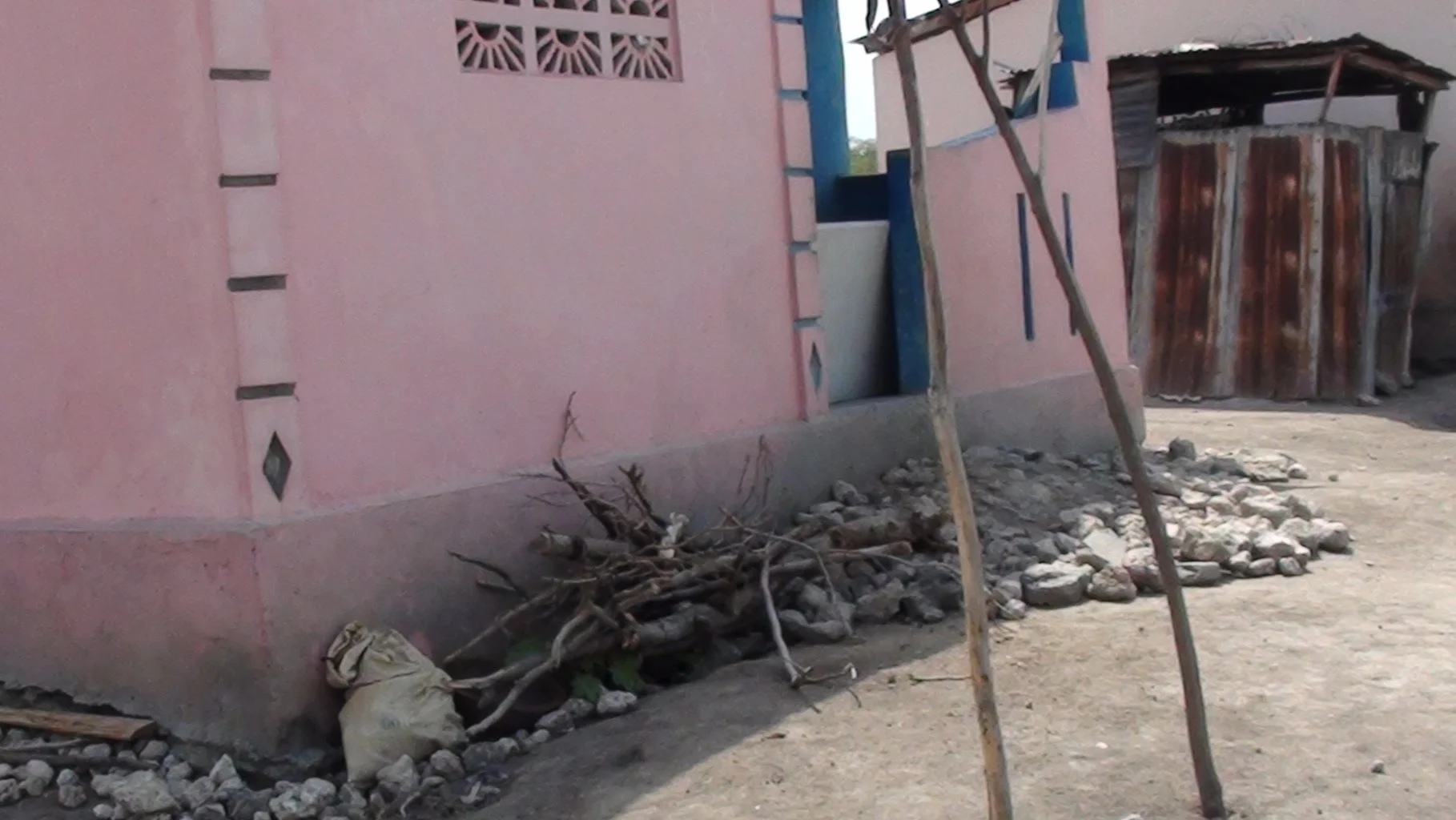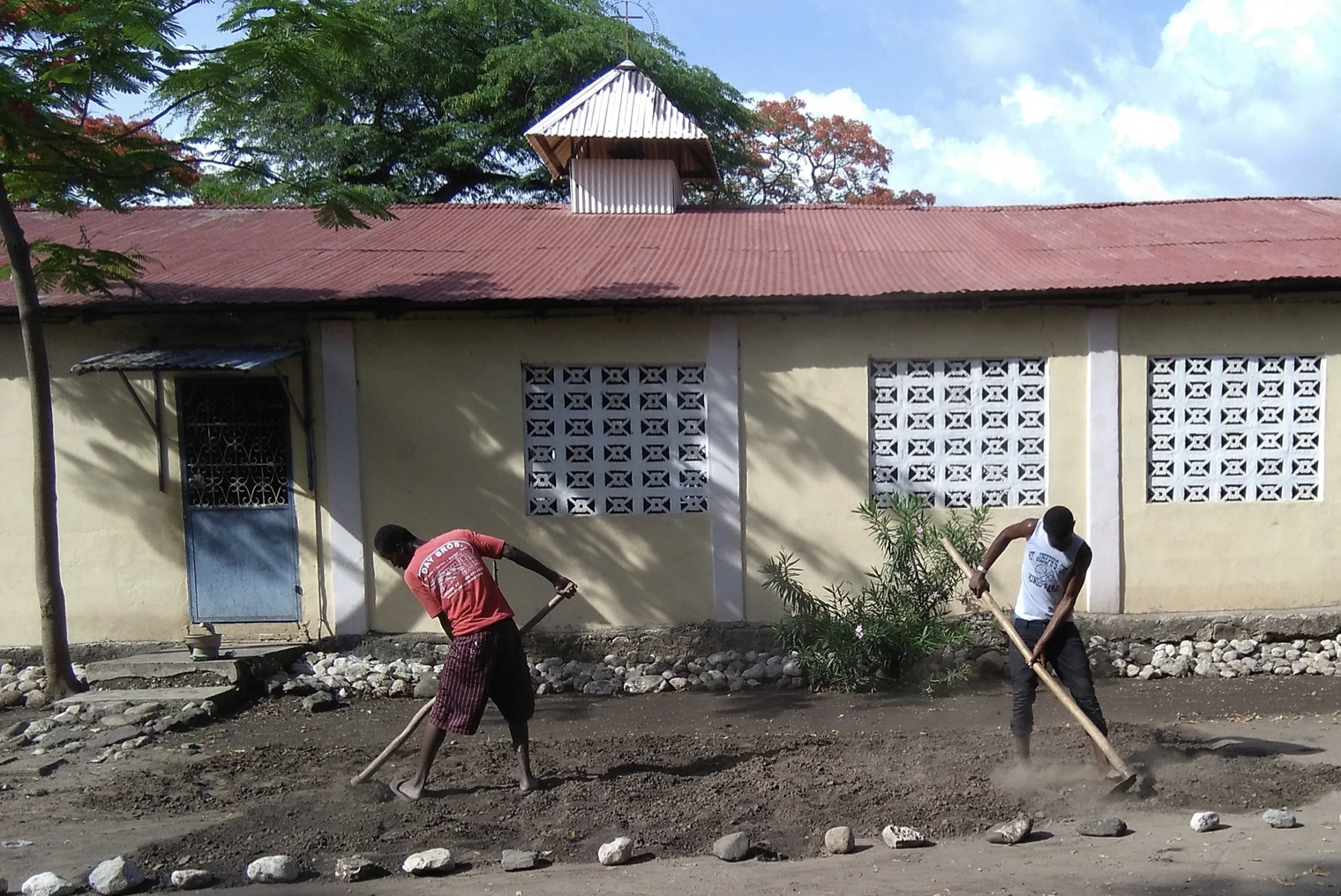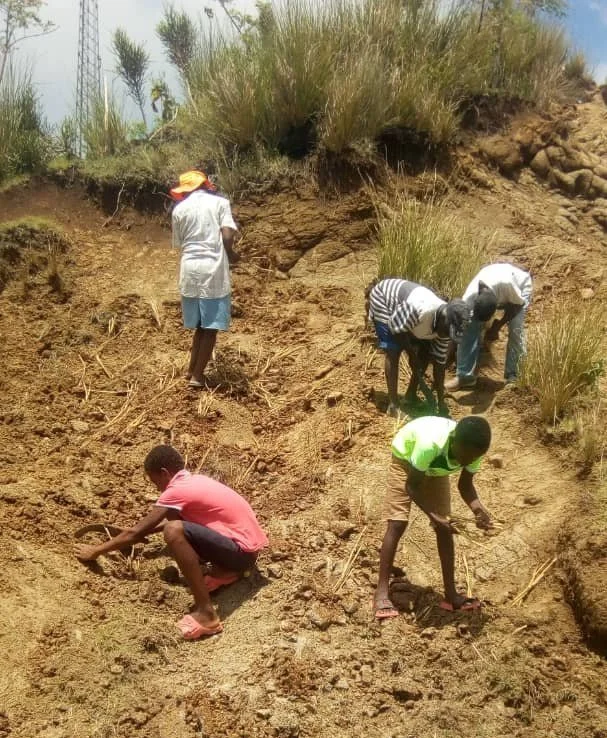The ovals in light green indicate Haitian regions where we’re growing grass. With your continued support, we intend to expand our operations into additional regions.
Soil erosion in Haiti is one of the saddest cases of environmental degradation in modern times. The erosion has devastated Haiti’s environment while exacerbating the country's increasingly numerous other problems.
To date, global efforts at addressing this environmental tragedy have been inadequate, failing to achieve high levels of success. Hence, soil erosion continues to cause:
Damage to building and foundations
The siltation (water pollution caused by particulate terrestrial clastic material aka geological detritus) of dams
Accelerated mudslides and flooding in cities and towns
Limited availability of clean water
Loss of agricultural productivity
Loss of fisheries
But hope is not lost. With the proper initiatives, soil erosion can be solved.
Soil erosion exposes the foundations of homes, making them structurally dangerous.
Success with Perennial Grasses
The Haiti Grass Project is one of several projects for agricultural villages that can help decrease poverty in Haiti’s rural areas.
We’re successfully planting grass in Haiti to reduce soil erosion with planting sites including Gonaives, St. Marc, Bwa Blan, Jacmel, Marigot, and Port-au-Prince.
Villagers are planting grass in their communities around houses, churches, schools, and other public buildings. Project teams are also working with rural Haitians to plant grass in the mountains.
Villagers prepare the ground to plant grass around a church.
Planting grass is a relatively inexpensive solution to the ecologically devastating erosion. Yet the main obstacle faced by the grass project in Haiti is lack of grass seed and logistics. Demand for grass planting is growing throughout Haiti, and with it, our need for grass seed. You can help meet this need.
We need your help!
In Villages
The demand for grass seed from Villagers in Haiti is HUGE. High demand for seed is testimony to the Haitian determination to protect their soils. We are, however, unable to keep up with the demand for grass seed nor to help with logistics.
Ye with even nominal donations, together we can stabilize Haitian soils by deeply rooting grasses to protect the precious land from erosion. Please help us by donating, which will facilitate the planting of one or more acres!
As soil stabilizes, another way you can join us is to support the planting of fruit trees to bare fruit and revenue for the Haitian villagers.
Please support this cause. Let’s put an end to soil erosion in Haiti!
It Begins on the Mountains
The massive mudslides during hurricanes and storms begin in Haiti’s deforested mountains. Trees in the mountains are continually being cut down for fuel. Torrential rains descend with devastating force, pounding Haiti’s bare mountainsides and sending floods crashing down the mountain sides and taking with them the nutrient-rich topsoil, which in turn is deposited in the lowlands, freshwater bodies, and the ocean. Once deposited in fresh water bodies, this topsoil silts or fills the dams, greatly reducing their usefulness. Once lost, this soil can never truly be restored back to the mountains.
Deposited in the oceans, this soil destroys fisheries on which more than 400 villages in Haiti rely for employment and as an essential source of food. Loss of the nutrient-rich topsoil has resulted in the infertile soils and devastating agriculture losses to Haiti's agrarian economy. When soils can no longer support agriculture, the country faces threats to food security, and thus resorts to relying on imports.
Planting grass on mountain slopes. The top soil necessary for plant growth has been lost, thus exposing subsoil.
On the other hand, as opposed to merely rushing down the mountain sides, when tropical rains descend on our planted mountain grass, this grass shields the force from the rains and allows its water to percolate into the ground in order to fill aquifers.
Disaster Preparedness
We often hear about disaster recovery, yet even better is preparation in advance to alleviate the impact of disasters. Hurricanes are a major disaster in Haiti. They have killed thousands of people, mostly through landslides due to unstable soils. To minimize mudslides, Haitian villagers are planting grasses as part of the project, which stabilizes soils in the eroded areas.
Be part of the long-term solution for hurricane preparedness. A few dollars now can save innumerable lives! Your donation is key to this solution.
Flooding in Port-Au-Prince, Haiti caused by Hurricane Ike. US Navy Photo.
Education on Environmental Conservation
Education on natural resource conservation is crucial in Haiti as evidence demonstrates this results in a mind-shift, a change in cultural practices, and increased valuation of the environment.
Join our environmental education team in Haiti to bring awareness to hundreds of individuals and communities.
Our team conductss awareness sessions with Haitian locals.
Tree and Grass Nurseries
While in the US we go to Lowes, Home Depot, and many other stores to buy plants and grass, in Haiti such nurseries are not readily available.
That’s why we’re establishing grass and tree nurseries in which villagers plant vegitation native to Haiti. Our experience proves that villagers are less likely to cut trees if they have grown the trees themselves. When these trees are ready, villages can then sell them for income. The nurseries also serve as education centers.
A villager preparing to plant trees which our project provided.
Solar Cookers
People in Haiti cut trees down to use for charcoal, so until alternatives for cooking fuel are developed, these trees will continue to disappear. Yet because God blessed Haiti with plentiful sunlight, we’ve therefore been experimenting with solar cookers—a device that harnesses the energy from direct sunlight to heat, cook, or pasteurize drink and other food materials— so as to reduce the number of trees killed for charcoal.
The project’s first solar cooker was donated by Board member Dr. Fanchon “Fancy” Funk.
A woman carries supplies through a flooded street in Cap Haïtien. UN Photo, Logan Abassi, 11 Nov 2014. NICA ID 616784









